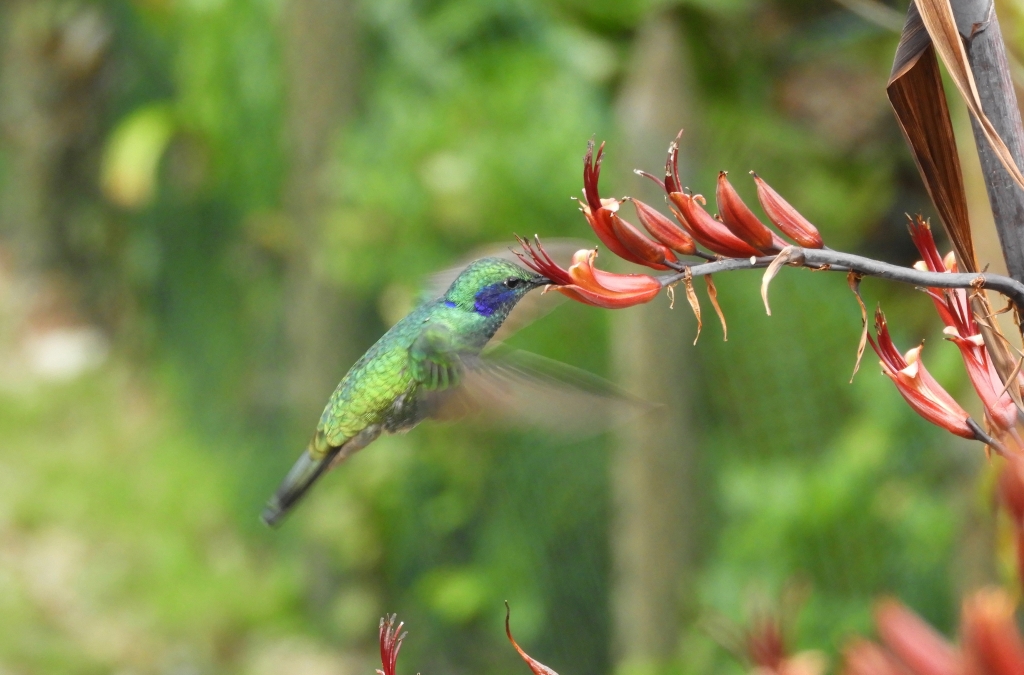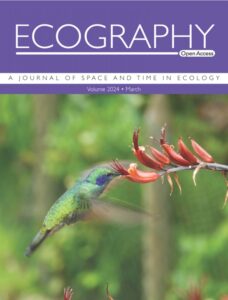

This stunning photo which made the cover of the March edition of Ecography – A Journal of Space and Time in Ecology was taken by the School of Biological Science’s Cristina Rueda Uribe.
This, taken together with a positive association between ecosystem seasonality and decreasing populations, highlights the need to ensure ecological connectivity across mountainous ecosystems to protect animal movement.” Cristina Rueda Uribe
The photo shows a Lesser Violetear (Colibri cyanotus) visiting a flower to drink nectar, which is its main source of energy. Cristina took this photo in the Andes Mountains of Colombia, at 2,800 m above sea level in ecosystems of elfin forests.
Cristina, a PhD candidate in SBS, led a study to advance knowledge about hummingbird movement, which has been a very challenging area of study in the past because hummingbirds are so small.
In this study, Cristina and co-authors used the power of citizen science data, which consists of people uploading the records of species they observe in the wild. With the growing popularity of citizen science, millions of records are openly available over long time periods and very broad spatial ranges, allowing researchers to learn more about biodiversity and nature at scales that were not possible before.
Cristina said: “Hummingbirds depend on flower nectar, a food resource that is highly variable in time and space, as their main source of energy. In the rugged topography of the Andes Mountains, movement across elevations and between ecosystem types could enable hummingbirds to follow flowering pulses. However, the difficulty of tracking hummingbirds has so far resulted in scarce knowledge about their movement patterns, limiting management to effectively protect landscapes for these key pollinators.
“In this study, we used two decades of citizen science records to predict monthly species distributions. Our findings reveal widespread intra-annual shifts in elevation and ecosystem type by hummingbirds in the region. This, taken together with a positive association between ecosystem seasonality and decreasing populations, highlights the need to ensure ecological connectivity across mountainous ecosystems to protect animal movement.”
Read the cover story and the rest of the journal’s March issue here.
Notes for Editors
| Notes for Editors | Taken from the University of Aberdeen, School of Biological Sciences website. The University of Aberdeen published this article here on 25 March 2024. Image by Cristina Rueda Uribe: “a Lesser Violetear (Colibri cyanotus) visiting a flower to drink nectar, which is its main source of energy” and the front cover of Ecography journal. |
| Reference | https://www.abdn.ac.uk/sbs/news/22975/ |
| Published | Monday March 25th, 2024 |





















































